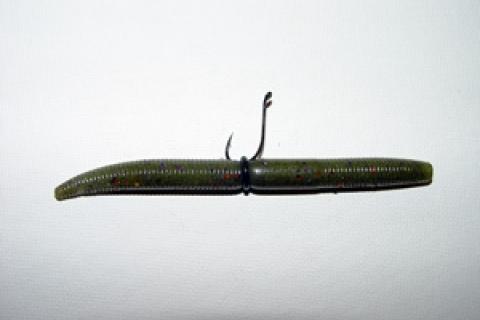
 The subtle look of a soft stick bait like the Yamamoto Senko seems to be particularly appealing during springtime, when bass are in the pre-spawn and post-spawn activity phases.
The subtle look of a soft stick bait like the Yamamoto Senko seems to be particularly appealing during springtime, when bass are in the pre-spawn and post-spawn activity phases.
On natural, free-flowing river systems, smallmouth bass are particularly fond of stick baits once the water approaches the upper 50-degree range. At this time the fish begin moving into the areas where they will eventually spawn: protected backchannels around islands; gravel shallows on inside river bends; and rocky creek mouths.
I like to start off with a wacky-rigged stick bait, usually a 4-incher. The presentation is about as close to soaking live bait as you can get with a soft plastic. Simply cast the bait at the targeted area and allow it to slowly sink. Strikes can be slight; so set the hook as soon as you feel any unnatural weight or a tap. The downside of a stick bait is that fish will eat them, literally. Deep hooked fish can be a problem, so don't delay the hookset. I find that most deep hooked fish can be unhooked without visible tissue damage with the proper use of a squeeze handle-style hook remover, a better option in my mind than cutting the line and leaving the hook in its gullet.
Soft stick baits excel on springtime largemouths. On weedy lakes I start shallow, working the zone between the inside edge of any weeds and the bank. If the shallows don't produce, I move to the outside edge of the weeds, allowing the slow, fluttering fall of the stick bait to trigger strikes from along this zone.
Wind can play havoc when working a weightless sinking worm. And it's often windy during the spring. The wind catches your line, creating a bow that makes contact with the bait impossible. You can counter this by keeping your rod tip pointed down, only a few inches above the water. Reel slowly during the bait's fall, to be sure the line's relatively tight.
- 4699 views

